Gas leakage sensor with shutoff valve: device, classification + how to choose and install correctly
Even the most careful and careful operation of the gas can lead to an accident. Its leak is a serious problem, which is vital to learn about before the concentration of gas in the room reaches a critical point.
A good gas leak detector with a shutoff valve is an almost indispensable device that can prevent tragedy. Such a device not only signals an emergency, but also prevents its development, blocking the supply of fuel. After its installation, each homeowner will feel more confident and calm.
In this material we will talk about the device of the sensor with a shut-off valve, consider the structure and principle of operation, give practical advice on the selection and installation.
The content of the article:
Features and types of household gas sensors
At its core, a gas leak detector is a small, sometimes mobile, device that responds to changes in indoor air composition. A special locking element (valve) that complements the device makes it possible to stop the fuel supply in time if its excess is detected in the air.
A gas leak monitoring device equipped with a shut-off valve can alert owners of a leak by sound or light signals. Some models may work in the “Smart House».
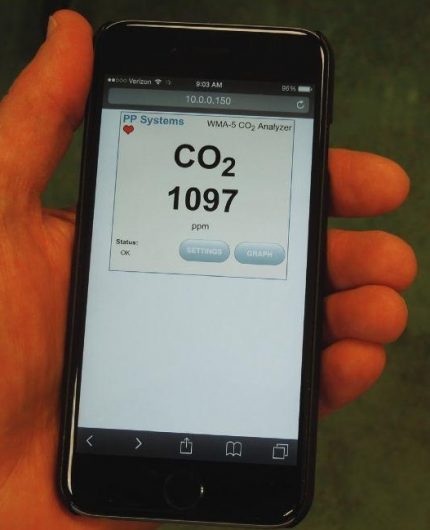
The presence of a shut-off device makes the gas analyzer operation extremely autonomous: the sensor will automatically shut off the gas supply without human intervention, which is especially convenient if homeowners are not at home. In addition, modern devices can turn on forced ventilation in the room and transmit a signal about an emergency to the appropriate services.
The device itself consists of the main functional units.
- primary converter - a sensor that traps gas in ambient air and detects its concentration;
- measuring module - reads information from the primary converter and compares it with acceptable nominal values;
- executive unit - a valve that directly stops the supply of blue fuel;
- battery - power supply unit, battery or galvanic cell.
The sensor can respond to various types of gases, so that the detectors can be classified by the type of absorbed fuel.
Devices can be of the following type:
- natural gas analyzers;
- carbon dioxide detectors;
- detection sensors carbon monoxide;
- combined devices that respond to different gases.
The latter type is more popular, as it makes it possible to fully monitor the safety of the air composition.
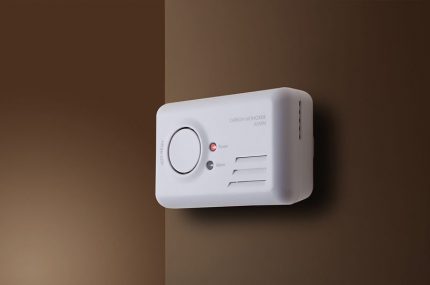
Additionally, modern devices are also divided by the method of determining gas concentration:
- Catalytic Gas Analyzers (or thermocatalytic) - their surface of the sensitive element is covered with a catalyst layer (tin, platinum, palladium dioxide). The gas, the concentration of which increases with leakage, is oxidized by atmospheric oxygen, which causes heating. Which, in turn, is a signal for the sensor to trigger.
- Semiconductor Detectors triggered by a sharp decrease in the resistance of the sensitive element, made on the basis of tin oxide. Resistance decreases with increasing concentration of CO, which is oxidized. To ensure the speed of the sensor, a heater is provided in its design - a resistive layer of inert materials.
- Electrochemical sensors with solid-state or liquid electrolyte - the former use a solid electrolyte in conjunction with a heater, and the latter use an acid or alkaline solution as a sensitive element.
- Infrared sensors establish the current concentration of fuel by analyzing the environment, which is within the infrared spectrum.
According to the method of supply, gas analyzers are wired and wireless. The former operate on a network and are dependent on the availability of electricity. The sensors of the second type function due to the battery, they are more reliable due to their autonomy.
Equipping the device with a shut-off valve significantly expands the functionality of the device and makes its operation more rational. After all, just one shut-off valve that worked on time can save tens of lives. Therefore, the principles of operation of this node should dwell in more detail.
The device and principle of operation of the valve
The most popular for domestic use remain electromagnetic shut-off valves and shut-off valves controlled by electric pulse.
Locking mechanism solenoid valve allows you to instantly block the fuel supply when an emergency leak is detected. The assembly is mounted at the entrance to the gas pipeline. As soon as the sensor fixes the maximum rate of gas concentration, the mechanism closes the electric circuit, after which the valve closes.
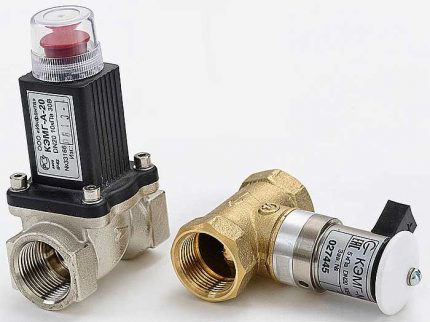
Gas analyzers with valves designed for use in a house / apartment, cutting off the gas due to the operation of an electrical impulse, work somewhat differently. The valve is in the open position due to a mechanical latch. If the sensor detects a leak, a short current pulse is transmitted to the coil of the electromagnet, after which the latch works, and the valve itself switches to the closed position.
Valves of this type are conventionally divided into normally open (NA) and normally closed (NC). The device of the first variety does not provide voltage supply to the coil; gas is cut off when the sensor is triggered. In the second case, an impulse is required to open the valve itself, and gas is cut off by the valve at the moment the voltage in the coil disappears.
NA valves are more suitable for domestic use, as even an unexpected blackout will not cause gas shutdown. In addition, gas analyzers with such valves are considered more economical: while maintaining the voltage of the coil in the coil is necessary to maintain the operation of the NC cutter, the NA type valve does not need power supply when the valve is open.
Subtleties of choosing a gas analyzer
Selection and purchase of a gas analyzer with a shut-off valve requires a responsible approach. Do not save on the sensor, because such a technique should serve for years. Therefore, the search for the cheapest device is not always justified.
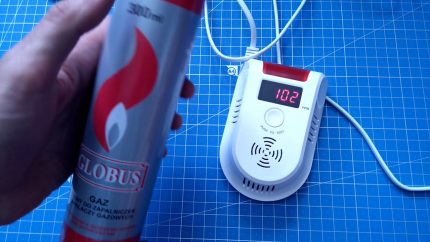
For domestic conditions, users most often choose sensors that respond to the outflow of natural gas, which enters the apartment on the highway either located in liquefied condition in cylinders.
In addition to the type absorbed by the device type of gas the user should pay attention to such important characteristics inherent in a quality analyzer:
- limit value gas concentrationin which the device signals an accident;
- ability to analyze gas content in volume and mass fraction in the air;
- opportunity recording current air condition at several points in the room;
- autonomy of work and her time;
- opportunity concentration increase tracking different types of gas.
Plays an equally important role manufacturer reputation and reviews real users. Detailed reviews of gas analyzers will help you choose the best model for specific conditions.
Warranty service - The same important component of the service. It is worth paying attention and cost of spare parts, their availability in stores.
Since the gas leakage sensor is almost always in sight, it is of great importance appearance. In addition to the aesthetic component, it is worth considering such characteristics of the case as moisture and dust protection.
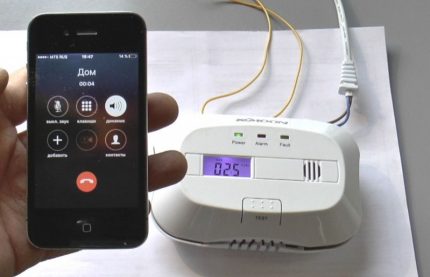
An acceptable glazing valve is selected for its key characteristics:
- type of valve - NA. or NC .;
- bore diameter;
- type of food;
- threshold of permissible gas pressure.
All necessary information about the valve is indicated in its passport and on the label.
As stated above, normally open valves are more ergonomic to operate. However, when interfacing with a sensor that, when turned on, it will automatically check its own outputs by sending a pulse, an unplanned shutdown of fuel may occur without leakage. Therefore, before buying a gas analyzer, you must study the sequence of its work.
Mounting a gas leak sensor
Only a certified gas service specialist can install the shutoff valve. And in case of unauthorized installation of the valve on a gas pipe, the consumer faces fine for interfering with the gas supply system.
But the installation of a sensor that signals a gas leak can be done independently.When placing the device, it is necessary to rely on the recommendations from the passport to the device. This document contains all the information necessary for connecting, describes the connection schemes of additional devices.
Traditionally, the device is fixed on the wall in the place where the fuel leak is most likely. This may be the zone near the gas column or boiler, stove, counter, in the attachment points of which often leaky areas may form. At the same time, the distance from the gas equipment sensor should be no more than 1.5 m.

The height at which the sensor is mounted depends on the type of gas being analyzed, since different types of fuel have their own weight and are concentrated in air at various levels. You should also focus on the recommendations given in the instructions for a specific model of a gas analyzer. For example, for methane, the installation distance is set within 0.3-1 m from the ceiling.
The sensor for propane and other gases, which are heavier than air, is mounted at a height of 0.3-1 m from the floor. For combined devices measuring the concentration of methane and carbon monoxide, a place at a level of 0.3-0.5 m to the ceiling would be suitable.
It is strongly not recommended to install the sensor in the following places:
- near a window or hole in the ventilation system;
- near an oven or gas burner (distance up to 1 m);
- in an area subject to the accumulation of dust, burning, grease or ash produced during cooking;
- in the rooms used for storage of paints and varnishes, gasoline, various solvents.
For more information on the location of the sensor-alarm device, see the design documentation for gasification and other regulatory documents of the gas service.
Conclusions and useful video on the topic
An example of how a gas leak sensor works and cuts off the fuel supply is shown in the video below:
Installation of a reliable and high-quality gas analyzer, supplemented by a shut-off valve, can be a key point in preventing gas leakage. After all, the timely detection of fuel leakage can not only reduce material damage in case of bangbut also save someone's life. Therefore, in the realities of the state of the modern gas supply system and subject to increasingly common failures in the gas equipment itself, users of familiar fuel should seriously think about their safety.
Do you use a gas leak detector? If so, please share with our readers your experience and impressions of its use, tell us if you are satisfied with its work, how often false positives occur. Write your recommendations, add a photo of your gas analyzer, ask your questions - the feedback form is located just below.

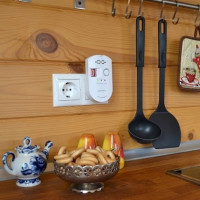 Carbon Monoxide Detector for Home: Details on Leak Detectors
Carbon Monoxide Detector for Home: Details on Leak Detectors  Battery gas leak sensors: operating principle and varieties + best brands on the market
Battery gas leak sensors: operating principle and varieties + best brands on the market 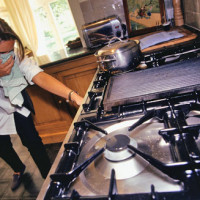 What to do if a gas stove passes gas: causes of gas leakage and their elimination
What to do if a gas stove passes gas: causes of gas leakage and their elimination 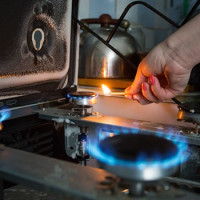 Types of domestic gas: what gas comes to our apartments + features of domestic gas
Types of domestic gas: what gas comes to our apartments + features of domestic gas 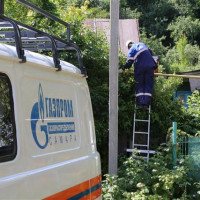 Where to call if there is no gas in the apartment: reasons for disconnection + procedure for the absence of gas
Where to call if there is no gas in the apartment: reasons for disconnection + procedure for the absence of gas  What to do and where to call if there is a smell of gas at the entrance? Leak Detection Procedure
What to do and where to call if there is a smell of gas at the entrance? Leak Detection Procedure  How much does it cost to connect gas to a private house: the price of organizing gas supply
How much does it cost to connect gas to a private house: the price of organizing gas supply  The best washing machines with dryer: model rating and customer tips
The best washing machines with dryer: model rating and customer tips  What is the color temperature of light and the nuances of choosing the temperature of the lamps to suit your needs
What is the color temperature of light and the nuances of choosing the temperature of the lamps to suit your needs  Replacement of a geyser in an apartment: replacement paperwork + basic norms and requirements
Replacement of a geyser in an apartment: replacement paperwork + basic norms and requirements